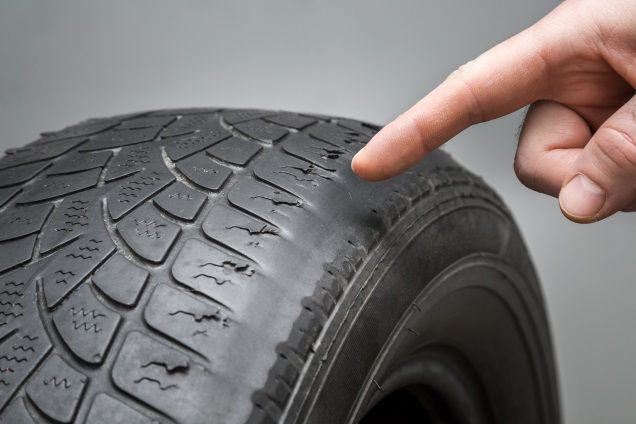A flat tire is one of the most frustrating things that can happen to a driver. It doesn’t matter if it’s in your driveway or on the side of the road; you need to know how to fix it. But what if you don’t have a spare…which is often the case when you have run flat tires. You’re not out of luck yet! There are many different ways to get around without having a spare tire handy.
What Are Run Flat Tires?
A run flat tire is a type of pneumatic vehicle tire with limited self-supporting capability, designed to allow the driver some distance to repair or replace the flat tire at any time and place on public roads without affecting mobility. Essentially it is a tire designed to continue driving safely even with a loss of air pressure.
What Are the Benefits of Run Flat Tires?
The greatest benefit is that you don’t have to change or repair the tire when it goes flat. For some brands you can drive up to 100 miles on a flat tire. This also means will not get stranded somewhere and have to wait for a tow. You can safely drive to a mechanic or service station. Some pther advantages include safety features such as high-speed driving ability, ride comfort, and noise reduction.
What Are the Drawbacks of Run Flats?
Some disadvantages may be decreased fuel efficiency, decreased wet traction, and increased vehicle weight.
How to Tell If you Have a Flat Tire
You can tell they have a flat tire by looking for the following signs:
- Loss of air pressure in one or more tires.
- Sudden noises while driving.
- Feeling that your car is pulling, bouncing up and down, or having difficulty steering when you turn corners.
- Receiving warning from your Tire Pressure Management System.
You can also checkout these predictive warning signs your tire is about to go flat.
Can Run Flat Tires Be Repaired?
Repairing a run flat tire may not always be an option. 70% of all manufacturers of run flat tires strictly prohibit the tires from being repaired. That being said, 30% of run flat manufacturers allow a repair as long as the damage is within the repairable area.
Run flats rely on a different kind of construction that make the sidewalls stiffer then a standard tire. A repair on these tires, like a patch or plug, may not hold up as well on a run flat. Generally it is advisable if you get a puncture in a run flat tire that you replace it and not repair it.
What To Consider When Deceiding to Repair or Replace a Run Flat…
Most people first consider the cost, however really you should first consider safety. Repairing a run flat may be ok for very minor damage or emergency situations. You should however seek a replacement tire as soon as possible. If the brand of your run flats say “do not repair”, then you should follow their recommendation and simply replace the tire.
Cost of Replacement vs Repair
Replacing a tire is always going to be significantly more expensive then repairing one. A new run flat tire could cost you $300, but a patch or a plug done by a pro shop might only cost $50. The catch however is, it isn’t recommended to repair a run flat. A repair may impact the structural integrity of the tire and cause you more in an accident later.
Consider a Used Run Flat
On the other hand you could consider purchasing a used run flat tire. You can find second hand run flats online and at used tire shops. You’ll save about 60% off from buying used. You must find one that is of a similar tread and treadwear, and meets the size and load capacity specs of your vehicle.
The Signs of Tire Problems
Some common signs of tire issues include:
- Uneven treadwear
- Bubbles or blisters on the surface
- Cracks in the side walls due to heat exposure or age.
Any signs like these above should be indications that your tire needs to be replaced. You should not put off dealing with this issues. The longer you wait the worse the problems will get.
How Often Should You Replace a Run Flat Tire?
It is a recommendation that when inspecting tires, you replace the tire with a new one after five years or 50,000 miles. You can actually check the manufacturers estimated mileage you should get from them on their website. While 50k is a general estimate, the best thing to do is check the tread depth yourself using a guage. Everybodys tires wear differently because of driving style and terrain. By checking your tires tread depth you can replace them before they get bald.
Do You Have to Replace All Four Wheels at the Same Time?
In most cases, you should replace all four tires at once. While that is expensive it is the best choice for performance, traction, and fuel economy.
If you have a spare tire on hand you will be able to switch it out temporarily and possible permanently if it is a full size spare. For many folks with run flats, the vehicles are not equipped with spares in the trunk anymore.
Repair or Replace a Run Flat Tire – Conclusion
Run flats have their pros and cons. On one hand you can drive with a flat tire for almost 100 miles. On the other hand they are expensive and when they get damaged their require replacement. While some manufacturers allow for their run flats to be repaired it is not the best option for your vehicle and safety.

